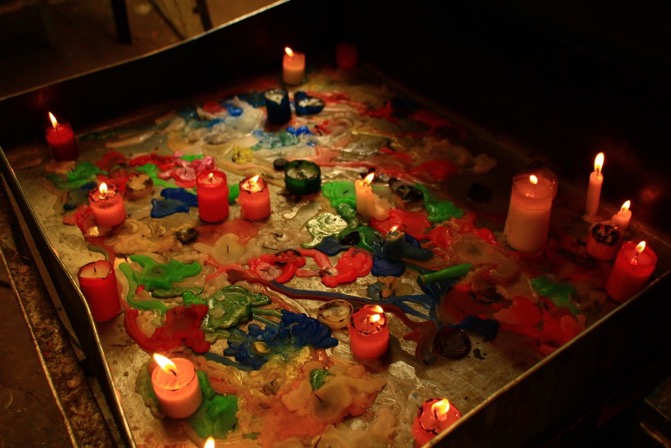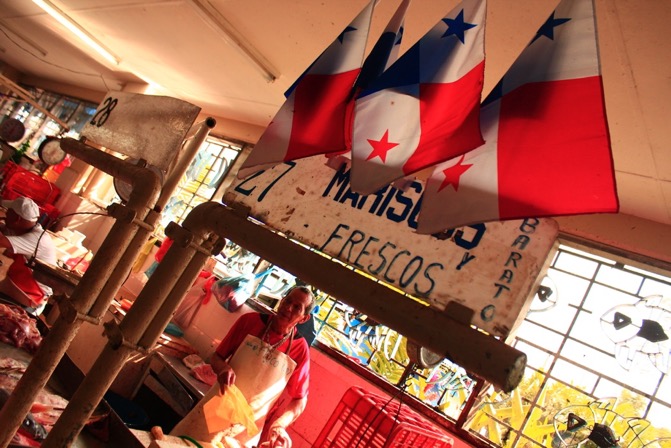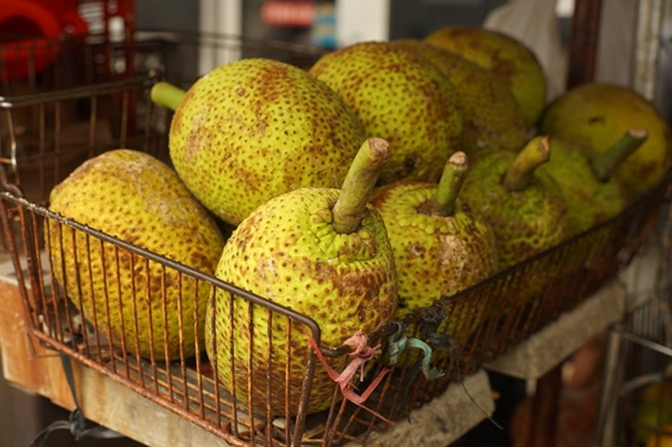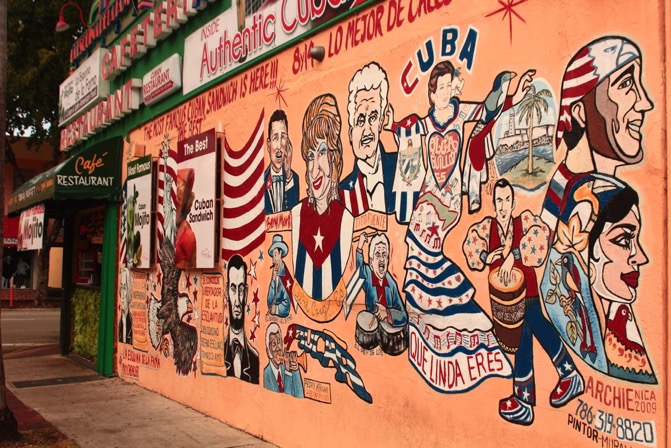Introduction
How have marketplaces become a collaborative space for cultural preservation in times of modernity and globalization? How these commercial spaces have helped evidence assorted sociocultural processes across the American continent?
Globalization and industrialization processes around the world, have caused a homogenizing effect on traditional and folkloric practices, affecting these popular and vernacular expressions and leading them to disappearance, allowing a reconfiguration of cultures and identities through the American continent. Technological advances and globalization tend to uniform cultural practices, through standardized globalized patterns, while industrialization has forced a transition from rural agrarian civilizations to urban and industrialized societies, motivating sociocultural phenomena like hybridization, miscegenation, syncretism and creolization.
García-Canclini (2005) explains the idea of hybridization, as a series of “…sociocultural processes in which discrete structures or practices, previously existing in separate form, are combined to generate new structures, objects, and practices”, additionally these “…so-called discrete structures were a result of prior hybridizations and therefore cannot be considered pure points of origin…” (p.25). As explained by the author, hybridization is an unplanned result of processes of cultural fusion, migration, tourism, economic and communicational exchange, to name a few.
Regarding the American cities’ diversity, hybridization and syncretism, García-Canclini (2003) describes these contexts as a mixture, “…they are full of recently arrived farmers, and even if was 20 years ago”, considering them as a hybrid scenario between the rural and the urban backgrounds, as a context that debates between its agrarian past and modernity, where different cultures’ traditional and folkloric expressions of identity and diversity refuse to disappear, manifesting through diverse spaces of conservation, as they fight to stay alive in the age of globalization. These places face different migratory processes, risking their own popular and traditional practices from gastronomy and material folklore, to religious and superstitious beliefs, including magic, medicine and Santería.
Within these expression and resistance spaces for identity and diversity, marketplaces or traditional popular markets have become a cultural preservation spot, where these beliefs, alimentary heritage and mass culture’s expressions stay alive and active, as a testimony of the American cities’ rural, agrarian, indigenous and pre-Hispanic past (Figure 1).
As expressed by Eames (2015), “There is some evidence to indicate that one can judge the state of culture in a country by the quality of the bread and soup” (p.226). Consequently, marketplaces become a testimony of the American continent’s diversity, its migratory processes, regional identities, rural origins and indigenous roots. Besides its wide variety, product freshness and the possibility to bargain, between a lot of benefits for the consumers, the marketplace, as a space in crisis in our modern societies, becomes a meeting point for neighbors, friends and merchants. These places have helped preserve local, national and Latin-American identities, struggling against the impacts of globalization (Ángel-Bravo, 2012).
Modernity and globalization tend to have a homogenizing effect, threatening everyday artifacts and practices, as Villegas (1988) explains:
…These days, the advances on communications, media and technological concentration grow every single day, tending to standardize the object universe. Therefore, traditional identities start disappearing or become unnoticed, due to diverse reasons, as the absence of a solid and proper cultural tradition -after the disappearance of the indigenous culture and the adaption process of the European- distancing us. (p.7)
Regarding a modern context, according to García-Canclini (2002) “…globalization tends to uniform the market and standardize common patterns… pretending to homogenize or subordinate local markets and cultural forms under a worldwide self-proclaimed project…” being necessary to “recognize the differences”, juxtaposing this standardizing impact. Espinoza-Freire & Ley-Leyva (2020) remark the importance of spaces and strategies that allow the harmonious coexistence of diverse identities and the protection of cultural heritages, within multicultural contexts, especially in times of modernity and globalization.
This research project begins with the purpose of registering and analyzing marketplaces and fruit stands in the Colombian context, considering them as cultural preservation spaces, allowing a meeting point that embraces a collective and participatory construction of multiculturalism, identity, customs, traditions and diversity, through assorted towns and cities across the country. These explorations where later extended to a continental context, doing photographic registers in the USA, Panamá and Ecuador, which allowed an identification and analysis of the social, geographical and cultural factors that converge in these commercial spots.
Based on assorted exploratory referents from the USA, Panama, Ecuador and Colombia’s contexts, using photography as its primary registering tool and supported by descriptive, comparative and taxonomic approaches, this research is intended to comprehend and analyze the marketplace as a collective cultural construction and conservancy space for hybrid traditional identities across the American continent. Visual explorations and direct experience, allowed the identification of a series of inherent sociocultural processes, materialized and pictured through the miscellaneous artifacts available and photographed in these selected contexts. Additionally, this article describes and explicates the research`s stages and method, proposes a series of taxonomic perspectives, and exposes the sociocultural processes that converge and evolve across these commercial spots, as a participatory and collective effort, motivated and determined by the Americas’ colonization, migratory movements, biodiversity and related factors.
Conceptual referents
Latacunga’s Decentralized Autonomous Municipal Government (GAD, 2013) has defined the marketplace or central market as a “Center for alimentary commercialization with a steady and closed infrastructure, where the merchants buy and sell their products to the consumers from aligned stands” (Figure 2).
According to this definition, it is important to set a radical difference between these places and the commonly visited supermarkets, managed and controlled by centralized structures that control the purchase and sell of foods, clothes, medicines, utilitarian artifacts and more. Opposed to conventional grocery stores and supermarkets, popular markets, central markets or marketplaces are structured as a participatory and collective model, where merchants have access to individual commercial spots within a closed and steady architectural structure, in rural and urban contexts, offering a wide range of goods and services to their customers.
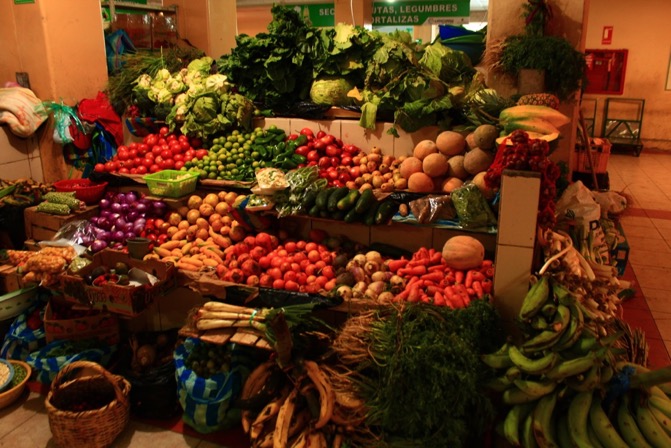
Figure 2 Individual commercial space. Mercado Central (Central Market), Latacunga, Ecuador. Photography: Own creation.
Regarding the Ecuadorian markets, Medina (as cited in Flores, 2014) considers the alimentary experience on these spaces as a search for identity treasures, as a “simple and rewarding ceremony”. Landeta (2014) explains:
A marketplace is a context where people are able to acquire victuals, prepared food or any kind of home supplies. The Quito markets really go beyond any definition. Herbs that help neutralize the evil eye, to find love or cure ant kind of illness, can be easily found on these places.
Through America, mostly in the continent’s central and southern regions, the marketplace has become a preservation space for traditional practices and a cultural reserve that embraces different forms of folklore and oral delivered knowledge, including handcrafted decorative or functional objects, religious beliefs, esoteric practices and imagery, Santería and superstition, naturopathic medicine, dressing, musical instruments, toys and millenary alimentary tradition.
As exposed by Martín-Barbero (1981), these contexts have not been homogenized, “…not yet devoured by the mercantile machinery” (p.4), surviving within urban environments, facing uniforming and hybridizing effects, associated with modernity and globalization. Essentially, the marketplace is a specially structured space for economic exchange and acquisition of goods and services, where all these cultural expressions and legacies are preserved, materialized through a wide range of single objects, that evidence the continent’s multicultural hybrid background and heritage.
Castiblanco-Roldán (2011) describes the marketplace as a social environment where trading relations are motivated, with a constant interaction between merchants and consumers, facilitating a direct negotiation of goods and services. Coronado (2010) describes these spaces as:
…The meeting point for neighbors, preserving an alimentary cultural memory, rich in traditions, locally and regionally, supporting and strengthening identity and belonging in a diverse and inclusive city… …popular places for a traditional wisdom exchange, encouraging cultural practices, increasing a sense of belonging…
Escallón (as cited in Ángel-Bravo, 2018) describes these markets as “…a space that beyond technologies, preserves its simple and millenary essence…” (p.77), poetically reminiscing some personal memories and experiences:
My childhood developed in the center of the concrete jungle, a hundred meters away from the rural oasis, the chaotic choir of marching announcers, attracting the visitors to the vegetables, the meats, the cheeses and the attentive smile of the grain store owner. It goes without mentioning that special aroma that tastefully stands out among the smells of the market, captivating the hungry eyes of the consumers, coming from the exhibitionist restaurants, displaying and delivering soups, eggs, sancocho, grains and tubers. (p.77)
Restrepo (2012), identifies four important differentiating factors and strengths, regarding these commercial spaces:
Elimination of intermediaries: Marketplaces allow direct sales, eliminating intermediary actors between farmers, manufacturers or handcrafters and consumers.
Quantity, variety and freshness: Elimination of intermediaries allows the marketing of fresher products, reaching a more responsible and sustainable production.
Favorability for social and commercial relations: These contexts become a gathering space for urban and rural communities, promoting economic and social relations, between farmers, consumers and visitors.
Haggling opportunities and direct negotiation: Supported by supply and demand, as product freshness and availability, it is possible to carry out a direct negotiation between producers and customers, reducing costs and prices for the consumer.
“Knowing where the products that we eat come from, reducing the number of intermediaries, having the opportunity to shake the hand of the person who grows our fruits and vegetables…”, are considered by Fourdinier (2017), as the most important advantages or benefits of buying in this type of space. In the age of globalization, marketplaces are more than just commercial spaces for the marketing of goods and services, becoming a community meeting point in small towns and cities, across the American continent, especially in Central and South America, as migratory communities in the USA. Strongly reacting to globalization and hybridization processes, these contexts constitute cultural reserves that struggle to survive as a collective and participatory effort, possibly unintentional, but still effective and relevant in our societies’ evolution and our continent’s folklores’ defense.
According to García-Canclini (2001), hybridization must be understood as a series of “…sociocultural processes where unobtrusive structures or practices, formerly separated, are combined to generate new structures, objects and practices”. As proposed by the author, these miscegenation and hybridization tendencies may divide and segregate communities or generate a melting pot that motivates integration, cultural interchange, as the birth of new art forms and aesthetics, as long as it is managed and assumed responsibly, respectfully and ethically.
Etymology and semantics
As explained by Abadía-Morales (1983) the concept of folklore was proposed by the anthropologist William John Toms, and first used in 1846, to describe every traditional, anonymous and empirical expression, the common people’s knowledge, what people believe, say, think and do. This concept is founded on the German roots Volk (People) and Lore (Knowledge), embracing a wide range of traditional practices and beliefs, orally and generationally delivered. Likewise, the concept of “trading” is cemented on the Greek word Trados (Deliver); therefore, a popular expression or custom must be handed orally and learnt empirically to be categorized as folkloric. These definitions are applicable for miscellaneous practices including handcraft, superstitions, food, dressing, empirical medicine and other forms of material and immaterial heritage, embraced by marketplaces across the continent.
Taxonomically speaking, as described by Abadía-Morales (1983), folkloric manifestations can be classified on four different branches, as follows:
Even though these four categories may have occasional presence in marketplaces, demosofic folklore has a starring role within these contexts, including architecture, handcrafts, empiric and naturopathic medicine, omens, superstitions and spiritual beliefs, alimentary tradition, customs and other material heritage. Utilitarian handcrafted artifacts become a vital and starring component within demosofic folklore and marketplaces in the American continent, as described by Yanasi (as cited in Villegas, 1988):
One of the differences between arts and handcrafts is that people hang their pictures right there, up in the walls. Meanwhile, they put their everyday objects up-close and grab them with their hands. Their beauty resides on its warmness and familiarity. (p.7)
Coinciding with Villegas’ (1988) concept of beauty, as explained by Pulos (1983), Benjamin Franklin had anticipated the idea of functionalism, as “…the relation of beauty to utility”. According to Franklin “…the invention of a machine or the improvement of an implement is of more importance than a masterpiece of Raphael…. Nothing is good or beautiful but in the measure that is useful” implying that utilitarian artifacts can be considered more valuable than artwork, hence only what works and fulfills its function, can be really considered beautiful (Franklin, as cited in Pulos, 1983, p.7). When asked to choose between beauty and functionality, Eames (2015) distinctively questioned “…I should make a choice between keeping my head or my heart?” (p.95), pointing out the importance of beauty and utility as closely correlated conditions about an object. Eames’ views about common utilitarian objects and their functionalism approach, coincide with Villegas’ (1988) concept of the “beauty of the useful” (p.15), opposed to the idea of a “beauty of the pretty” (p.16), merely based on subjective and aesthetic culturally influenced codes.
This conception of beauty serving functionality was previously exposed and defended by Pulos (1983), proposing that “No principle of design in America is so strong as that an object achieves beauty to the same degree to which it serves its function” (p.7). According to the author, there was a tight relation between the notion of beauty and function from the very beginning of colonization, relegating beauty as “…the natural by-product of functional refinement” (p.7), as an inherent and inseparable value, derived from the product’s efficiency.
As defined by Abadía-Morales (1983), “Folklore is an alive, typical, popular and empirical tradition” (p.14), so it is strictly necessary for an object, expression or tradition to comply with five inexcusable conditions or features to be considered as folkloric:
Traditional: A practice, knowledge or belief that is transferred generationally, usually by oral methods.
Popular: Collectively embraced and supported by a community, region or social group, becoming part of the “popular heritage” or pop culture.
Typical: Distinctive or representative of a particular human group, geographic region, community or ethnicity.
Empiric: Learnt by practice and direct experience
Alive or valid: A practice that remains alive and is still practiced by a culture, a community or group of people.
As explained by the Abadía-Morales (1983), this last condition is fundamental, since if a practice or tradition disappears, it would now be considered as a part of historical or archeological studies. From this approach, the definition of “popular” denotes the common people’s knowledge, which could be understood as “folk knowledge” or “pop culture” too. Therefore, the idea of folklore maybe conceived as a region’s own expression which is properly established, commonly practiced and delivered by oral and generational processes.
The people’s culture is his own expression. The human being, in his relationships with other entities, manifests his thoughts and beliefs through words and actions. The different systems to do it can be either through superior and structured methods like arts and science or people’s simple straight expressions. Therefore, folkloric manifestations become a live document of people’s realities, allowing us to see their real faces. (Abadía-Morales, 1983, p.10)
Methods and results
This research’s general structure is mainly based on the “folkloric method”, as proposed by Ocampo-López (1981), embracing four study phases:
Data and information search and collecting, including photographic register through the previously mentioned contexts.
Material and data organization and classification specifically referred to the visual contents collected.
Analysis and interpretation based on the collected visual material and data.
Final writings about the folkloric study.
A similar method was proposed by Díaz-Piedrahíta (1981), as he used photography to register a series of traditional alimentary practices, followed by taxonomy, description and analysis phases, through a sample of popular marketplaces in Colombia, which become the basis for his research, for the purpose of “…collecting and presenting the data before the ancestral custom disappears…” (p.8). As stated by the author, the growth of urban societies, threatens to end traditional kitchens, as the break with the rural past weakens the reproduction of folkloric practices, justifying the value and importance for this kind of research.
The analytical component for this project was supported on the “Photographic subject analysis method”, proposed by Marzal-Felici (2004). This method allows the researcher to comprehend the selected explored contexts, based on a morphologic understanding of the registered objects on each single picture’s subject. As a parallel process, photography has served as a creative and artistic instrument, using these places as a context for visual production and expression, raising awareness about the cultural value and importance of the marketplaces, regarding cultural preservation, among an industrialized and globalized society that tends to uniform culture and generate standardized patterns.
The visual component of this project is inspired by Charles and Ray Eames’ approach on traditional artifacts and practices, as they used still images to tell stories and describe traditional practices though common utilitarian, decorative and symbolic objects. As explained by Cruger (2012), architects and designers Charles and Ray Eames have emphasized the significance and beauty of everyday objects for people’s lives, as the designers’ ability to anticipate users’ needs, through their functional everyday artifacts and their documentary short films, exemplifying what this team defined as “…the uncommon beauty of common things” as a permanent vision.
Featuring toys, foods, tools, furniture, traditional and functional objects, the Eames’ team used their designs and movies to exalt and decontextualize a series of utilitarian implements, appreciating the beauty behind those simple everyday objects that make people’s lives easier and constitute an essential component in our societies’ evolution. As Koenig (2015) explains, Charles and Ray Eames’ documentary movies like Day of the dead (Eames & Eames, 1957a), Toccata for Toy Trains (Eames & Eames, 1957b), Tops (Eames & Eames, 1969) and the unreleased Banana Leaf short film (Eames & Eames, 1972), use “…daring combinations of real images, quick montages, animation and still shots, designed to catch the viewer's attention and spread information” (Koenig, 2015, p.69).
Santibañez (2012) follows a similar direction, using photography as a visual registration tool, exploring, describing and analyzing streetside food stands in Mexico, displaying traditional dishes, colors, ingredients, decorations, graphics and people through colorful pictures, which are used to complement traditional Mexican recipes. Similarly, within his research projects, Gaviria-Arbeláez (2019, 2020) provides photography a leading role, paying special attention to the picture quality and aesthetics, combining a classification of foods, leaves and recipes, with detailed images of the gastronomic processes and memories, regarding these expressions of the alimentary tradition.
As exemplified in the previously mentioned projects, photography has become an essential tool within cultural and folkloric studies, as it can be used to capture and register visual phenomena, including artistic expressions, customs, crafts, rituals and other traditional practices, while it can work as an instrument for graphic, artistic or audiovisual creation.
Stage one: the marketplace in Colombia
First stage of this project was intended to capture a wide sample of visual material and evidences in marketplaces and fruit stands in small towns and cities in Colombia:
Markets and fruit shops - San Andrés Islas. 2016, 2020, (Figure 11).
Galería La América - Medellín, Antioquia. 2010, 2016.
Central market - La Ceja, Antioquia. 2010.
Fruit stands - Calarcá, Quindío. 2011.
Galería Alameda - Cali, Valle del Cauca. 2011.
Marketplace - Manizales, Caldas. 2011, 2012, 2018.
Marketplace - Santa Rosa de Cabal, Risaralda. 2011.
Marketplace - La Cumbre, Valle del Cauca. 2011, 2012.
Marketplace - Dagua, Valle del Cauca. 2011.
Marketplace - Ginebra, Valle del Cauca. 2011, 2015, 2019.
Marketplace - Silvia, Cauca. 2017, 2018 (Figure 1, and Figure 4).
Mercado de Los Dos Puentes, Pasto, Nariño. 2018.
Plaza de Mercado El Potrerillo, Pasto, Nariño. 2018 (Figure 5, Figure 6, and Figure 7).
Mercado El Tejar, Pasto Nariño, 2018.
Marketplace, Palmira, Valle del Cauca, 2018.
Plaza de Mercado La Esmeralda, Popayán, Cauca, 2018.
Photographic explorations and records, supported a descriptive and comparative exercise, written in a chronicle style which allowed a detailed recollection of experiences, similarities and particularities, captured and identified through the photographic practice and registers. Simultaneously, there was an artistic and creative component that allowed an exaltation and recontextualization of these expressions and practices, through visual exhibitions, art displays and specialized events. Furthermore, this first stage included a search for international referents, which helped understand these phenomena from a wider perspective and a compilation of audiovisual approaches, like movies, TV shows and video clips, on which the markets where used as locations, backgrounds or inspiration sources, in Colombia, Chile, México and the USA, comprehending these places’ cultural impact and transcendence through mass media and pop culture. This search was accompanied by a simultaneous bibliographic and theoretical collecting, helping to understand the markets’ cultural value facing industrialization’s globalizing and homogenizing effects (Ángel-Bravo, 2016).
From a taxonomical perspective, it was possible to propose an objectual classification, from the photographic registers and descriptions, suggesting six categories regarding the objects and elements available across these places:
Food supplies: Including fruits, vegetables, grains, meats, and related products. The products’ availability and variety are determined by geography, biodiversity, and climatic conditions of the markets’ context. In some cases, agricultural products are delivered from nearby regions or towns (Figure 2, Figure 10, and Figure 11).
Prepared foods and beverages: Restaurants and cafeterias, candy shops, fried foods, juices, deserts, and fast food stands (Figure 3, and Figure 4).
Handcrafts and artifacts: Handcrafted toys, ornaments and artifacts, utilitarian objects, musical instruments, and dressing (Figure 5, Figure 9, and Figure 14).
Medicine and healing: Naturopathic remedies, plants, herbs, flowers, powders, creams, syrups, infusions, teas, and related medicinal products (Figure 8).
Superstition, esotericism and spirituality: Santería, Catholicism, and omen-related images, collars, candles, crosses, statues, pyramids, incense, potions, and essences (Figure 6, Figure 8, and Figure 13).
Non-commercial iconography and decoration: Muralism, Catholic and religious images and semiology, altars, shrines, churches, and other decorative elements (Figure 6, Figure 7, and Figure 12).
Castillo (2014) describes the marketplace as a “…preservation spot for agrarian and alimentary cultural memory”. As explained by Agamez & Pinto (2020), traditional alimentary practices constitute an evidence of the multicultural exchange between Spanish conquerors and native American societies, offering a physical testimony of the continent’s indigenous and pre-Hispanic customs, beliefs and folklore, mainly evident through the use of natural leaves as a packaging, cooking and preserving material for traditional gastronomic practices (Figure 4).
Considering categories A and B, as explained by Agencia Andes (2017), “Marketplaces hide the cities’ tradition, history and culture, because there is where the ancestors’ recipes stay intact, as the ancestral ingredients that intensify millenary flavors”. One of the markets’ most important contributions to folklore and tradition’s preservation is based on their alimentary diversity and food offer, which allows the oral delivery of popular knowledge through their flavors, aromas and seasoning. According to Armendáriz (as cited in Agencia Andes, 2017), if the markets disappear, a lot of culture will be lost too, hence it is necessary to protect these places, as a space for culture and learning (Figure 3, and Figure 4).
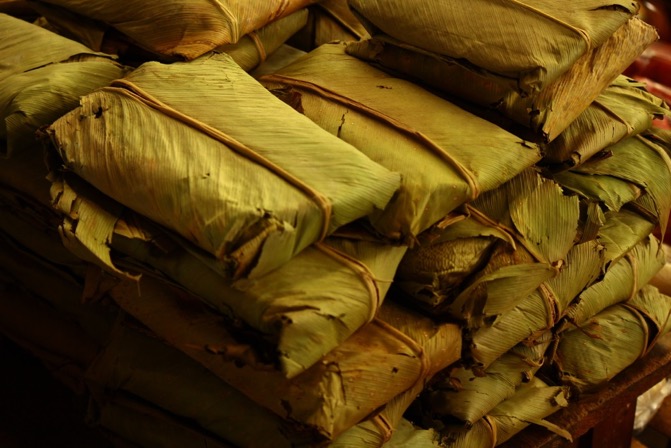
Figure 4 Traditional foods are wrapped in natural leaves. Silvia, Cauca, Colombia. Photography: Own creation.
As exposed by Estrada-Ochoa (2020), with the implementation of fire in food preparation “…cooking arises as the universal craft…”, mixing “…creativity, invention, ingenuity and resourcefulness…” as fundamental qualities of this emerging and evolving craft (p.33). As the author explains, all around the world, there are primitive forms of gastronomy struggling to survive and resist against modernity and globalization, finding in popular markets a safeguard for its conservation.

Figure 5 Traditional handcrafted espadrilles. Mercado El Potrerillo, Pasto, Colombia. Photography: Own creation.
Understanding the importance of foods and objects as an essential part of material heritage and demosofic folklore, the marketplace assumes a guest roll as a space for cultural identity preservation; therefore, cultural identity goes beyond languages, accents, colors of facial morphologies, as it is collectively built as a participatory expression, materialized through handcrafts, arts, foods, medicine, and artifacts. Through these natural and manufactured products, the marketplace has turned into a cultural preservation context, which embraces an extensive diversity of folkloric manifestations, syncretized beliefs and creolized cultural expressions.
Handcraft, as mentioned in category C, is defined by Abadía-Morales (1983) as the artistic and utilitarian crafts, restricted to the family environment and primitively built domestic workshops, going from indigenous origins to rural and urban detribalized societies. This category includes utilitarian home artifacts, furniture and tools, decorative implements, artwork, dress, toys, musical instruments, accessories, bags, and related objects (Figure 5, Figure 9, and Figure 14).
Categories D, E, and F are strongly related to people’s beliefs, faith and spirituality. In these cases, oral delivered tradition has been a fundamental part of their preservation and teaching, being concepts and practices that have transcended generationally through time and space. Additionally, there is a fine and delicate line between these practices, especially among medicine and superstition, as these concepts are usually syncretized from dissimilar spiritual, dogmatic and ethnical backgrounds. As proposed by Ocampo-López (1981), popular and traditional beliefs, regarding nature, society, religion, and spirituality, become an essential part of collective mentalities and long lasting permanencies, including popular mythology and superstitious rituals, delivered generationally and preserved through time by oral tradition, leading to a configuration or reconfiguration of cultural identities and heritages (Figure 6, Figure 8, and Figure 13).
Empirical and traditional medicine comes from magic, as shamans, medicine men and sorcerers across the continent tend to syncretize sacred rituals with empirical science. Leaving superstition aside, the plants’ active principles remain, like their pharmacological virtues from derived alkaloids and glycosides, thanks to the continent’s extensive biodiversity. As a crucial part of indigenous rituals, traditional expressions like chants, prayers, baths, dances, corporal paintings, fasting, sacrifices, mutilations, and related paraphernalia may denote an inherent religious character, while some of these practices and beliefs are syncretized, transcending through miscegenation and hybridization processes, as superstitions and omens (Abadía-Morales, 1983). As proposed by the author, there is a strong connection between magical and superstitious practices with naturopathic medicine, as they tightly coexist in these commercial spaces.
Categories D and E are strongly related to the continents’ aboriginal and African background, as they become an evidence of America’s conquest and colonization processes that forced a cultural reconfiguration, syncretizing the native practices, beliefs and customs, with the incoming foreign influences. Colombia’s Andean region tends to evidence a solid and dominant Spanish influence, as Southern side of the country tends to display some stronger aboriginal roots, while the coastal regions’ cultural expressions are primary creolized, as they are determined by African customs and beliefs, brought to the continent with forced migrations caused by slavery (Figure 6, Figure 8, and Figure 13).
Cultural configurations and miscegenation processes may vary from one place to another, depending on geographic circumstances and positions, weather, and migratory movements, mainly motivated by socioeconomic conditions, industrialization, violence, and related phenomena. Across America’s towns and markets, it is possible to appreciate a strong predominance regarding the different cultures involved in these miscegenation processes, creating hybrid cultures, as defined by García-Canclini (2001).
Stage two: The marketplace in America
As a part of the international referents collecting, it was possible to visit, explore and register a sample of markets in North, Central and South America, using photography as a primary compiling tool through assorted places in the USA, Panama and Ecuador respectively. This continental approach helped support and collate the previously proposed taxonomical exercise.
Continental referents
United States of America (North America):
Olvera Street - Los Angeles, California. 2012.
Markets - China Town, Los Angeles, California. 2012 (Figure 14).
Grand Central Market - Los Angeles, California. 2012.
Grand Central Station and Street markets - Manhattan, New York. 2013, 2015, 2019 (Figure 4).
Markets and botánicas - Little Haiti, Miami. 2014, 2016 (Figure 13).
Markets - Little Habana, Miami. 2014, 2016 (Figure 12).
Panama (Central America):
Ecuador (South America):
Regarding the Ecuadorian markets, according to La Hueca (2015), “…everyone considers this place special, either because of the unique offered dishes or the significance of being surrounded by history. Generations deliver recipes that eventually are turned into dishes and finally become a part of people’s everyday life”. Considering this context, Ecuador’s Ministry of Tourism (n.d.) points out the importance and transcendence of the alimentary tradition hosted and preserved by these places:
Ecuadorian gastronomy has been enriched by multiculturalism, the diversity of climates as well as the variety of spices and products that exist in the country. Also, the European and indigenous heritage have cemented a syncretism through seasoning and creativity, constantly improved by new generations of chefs and consumers. Originating what is known as creole kitchen.
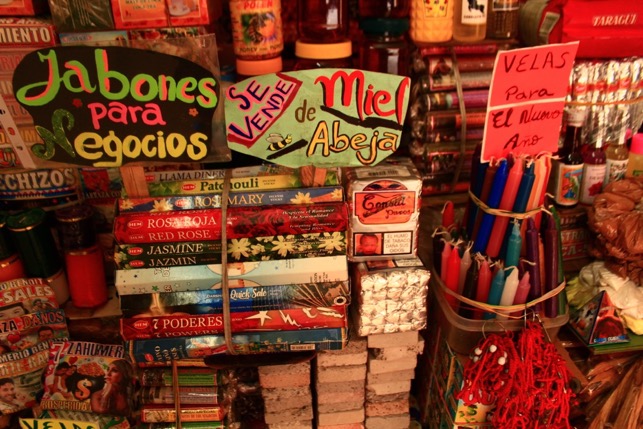
Figure 8 Medicine, superstition and omen. Mercado Central (Central Market), Quito, Ecuador. Photography: Own creation.
The Panamanian context is very important for this evaluation and analysis, as this country shares cultural roots with Colombia’s Caribbean region (Abadía-Morales, 1983) and constitutes an essential sample considering the Central American context. Additionally, as a cultural melting pot, Panama becomes a fundamental example of the miscegenation, creolization and hybridization processes between African, Indigenous and Spanish cultures in the post-Columbian America. Due to this country’s privileged geographic position and multiculturalism, Panama is well known and self-described as a “Center of the World, Heart of the Universe” (Harding, 2015, p.281) (Figure 9, and Figure 10).
During this second stage, it was possible to recognize a series of social, cultural, geographic, and human factors that get materialized and evidenced through the artifacts and products available in these markets. As it was possible to identify and abstract distinctive and coincident features from each visited place, these objects and practices evidence a confluence of situations, stories and backgrounds, building a material and immaterial heritage that transcends generationally for centuries (Ángel-Bravo, 2018). This analytic exercise, was finally concreted and depurated to five essential aspects:
A. Geography and biodiversity: The markets’ vegetal and animal variety is mostly determined by its geographical location, biodiversity, climatic, and biologic conditions, with a minimal exception of foreign and transported products. The marketplace becomes a sample and a testimony of a city’s alimentary offer, customs and habits. As stated by Eames (2007), breads and soups become a really useful way to learn about a city or a country’s idiosyncrasy, culture, and traditions. According to Ocampo-López (1981) societies’ historical evolution is determined by human adaptation to geographic environment, as people’s lives are conditioned by weather, relief, vegetation, animals, crops, populations and the reach for a slowly constructed geographic balance. These conditions eventually affect economies, customs, traditions and the regions’ alimentary heritage (Figure 4, Figure 10, and Figure 11).
B .Industrialization and globalization: America’s industrialization processes led to an evolution from handcraft to mass production, motivating the development of modern urban centers, where the central markets eventually become a contact point between citizens and their rural past.
As explained by Agrovisión Colombia (2001), globalization, technologic advances, and industrialization, have forced this transition from rural to urban societies, threatening agricultural production, as a wide range of expressions of tradition and pop culture on the national and continental contexts, especially considering alimentary heritage. Within this transitional process, marketplaces build a bridge between these modern urban civilizations and their agrarian and rural past, connecting modern societies with their millenary pre-Columbus origins. As expressed by Vitruvius (as cited in Coronado, 2010), the marketplaces in coastal regions and cities, are usually located near the sea ports (Figure 10). Otherwise, the marketplace tends to have a privileged central or downtown position in modern urban centers, hence the frequently used “central market” denomination.
C. Migratory movements and displacement: Conformation of urban societies and industrial centers, unemployment in rural areas, and other socioeconomic factors, have motivated people to migrate toward the cities. Additionally, sociopolitical problems in Latin America, force emigrational movements between cities, countries and continents, leading to hybridization, creolization, syncretism, and cultural reconfiguration processes, as customs, traditions and beliefs are shared through intercultural human relations. Looking back to the 15th century, America’s conquest and colonization may be considered as the background for the first migratory movements of our modern post-Columbian age, having miscegenation as its primary result. These migratory movements, not always favorable and voluntary, motivate plurality, thanks to the cultural exchange, inherent in these processes, motivating cultural exchange and a configuration of hybrid cultural identities (Gutiérrez-Silva, et al., 2020).
During the last decades, forced by economic and sociopolitical factors, there has been a strong migratory movement from Latin American countries to the USA, remarkably in cities like New York, Miami and Los Angeles, embracing and adopting the incoming foreign communities, leading to a cultural hybridization, between the migrant and the native expressions, motivating the conformation of structured urban communities or ghettoes (Figure 12, Figure 13, and Figure 14).
D. Oral transmission of knowledge: Traditional knowledge regarding food, craft, medicine and superstition, is generally delivered by oral transmission methods. As defined by Abadía-Morales (1983) this is a fundamental condition for a practice to be considered as folkloric, understanding folklore as practice that cannot be learned or delivered by formal educational methods or taught by formally established institutions, but through empirical learning, experience, oral or generational communication.
This kind of knowledge is usually carefully treasured and conserved by families who preserve it and inherit it from masters to apprentices. According to Abadía-Morales (1983), domestic communitarian and family-managed workshops are essential conditions concerning artistic and utilitarian handcraft production (Figure 5, and Figure 9). As exposed by Ocampo-López (1981), traditional cultures’ beliefs and world’s conception, whose origins are lost in time, transcend to the 20th century despite industrial and technological revolutions, rising against their homogenizing effects, which tend to uniform identities and generate standardized patterns.
E. Miscegenation, creolization and hybridization: Based on migratory movements and displacement, miscegenation processes between Spanish conquerors’ culture, aboriginal communities and slavery associated African forced migrations, have generated creolized and hybridized societies, at different levels or proportions, turning America into a multicultural melting pot. Creolization process, as explained by García-Canclini (2001), is based on this multicultural fusion, which begins with the European conquest and colonization of the American continent.
Determined by economic and sociopolitical factors, migratory movements lead to a conformation of structured urban communities or ghettoes (Figure 12, Figure 13 and Figure 14), generating syncretized beliefs and practices (Figure 7, and Figure 8), as hybrid identities that preserve their heritages and share their millenary traditions and customs, including handcraft, beliefs, musical genres, alimentary legacy, arts and folklore, sometimes mixing and evolving, originating countless fusions and transformations.
Conclusions
Throughout the whole research project, photography has worked as a registering and collecting tool, as images become a visual testimony of cultural processes and practices, which get materialized by the assorted products, like plants, foods, medicine, decorative and functional artifacts. The extensive variety of products available, represent a physical evidence of the continent’s cultural identity, spiritual and superstitious beliefs, millenary gastronomic tradition, pre-Columbian indigenous heritage, migratory movements, miscegenation and related social processes. Additionally, following Charles and Ray Eames’ ideas and aesthetics, photographic image has served as an artistic, expressive and creative resource, used to exalt and promote the beauty and cultural value of these places, materialized through their practices, products, objects, people and artifacts.
Based on the exploratory exercise, it would be fair to consider Folklore, tradition and identity as collaborative and participatory constructions, as they are built upon a coincidence of human beings, regarding a series of practices, beliefs, customs and expressions. In this sense, the marketplace could be considered as a concurrence of visitors, merchants, neighbors and costumers who coincide, interact and collectively build cultural identities across these places, working and involuntary struggling together to preserve a heritage, from their differences and particularities.
From the national context’s exploration, description and analysis, it was possible to identify a series of similarities and particularities between the selected markets, regarding product diversity, alimentary heritage, tradition, folklore and related aspects. These particularities represent a collective expression of tradition and identity, as they epitomize the practices, customs, beliefs and idiosyncrasy of a community, a region or a human group.
A continental approach helped comprehend a series of geographic, cultural, and socioeconomic aspects, which motivate and determine the existence of these spaces. Socioeconomic and historical factors as industrialization, colonization, migration, displacement, miscegenation, and creolization, have led to a configuration or reconfiguration of hybrid cultures, as proposed by García-Canclini (2001), originating new syncretized and creolized phenomena, including aesthetics, handcrafts, musical genres, gastronomic practices, fashions, syncretized beliefs and assorted artistic or cultural expressions.
As proposed by Charles and Ray Eames though their visual work, common day things and utilitarian objects’ beauty goes way beyond aesthetical perceptions, as their value is strongly attached to their functionality in our day to day activities and their cultural meaning. These objects become an essential part of people’s lives, traditional folk knowledge and pop culture, telling the story of the American continent’s social transformation from rural and agrarian societies to urban industrialized civilizations, based on industrialization and globalization (Figure 15). Handcrafted artifacts have been an essential part of people’s lives and the evolution of societies, facilitating practices such as cooking, eating, cleaning and cultivation, as they have served the human being, improving his daily labor and satisfying his basic needs; additionally, these objects’ handcrafted nature has contributed an additional value to artifacts and ornaments, as they achieve a special character, supported by their inherent human and folkloric nature (Figure 5, Figure 9, and Figure 15).
Marketplaces across the American continent have become a participatory effort for cultural preservation, rising against the homogenizing and uniforming effects of industrialization and globalization. These places constitute a collective space for resistance and cultural expression, preserving demosofic folklore through a diverse offer of products and objects, motivating a configuration or reconfiguration of identities, associated to miscegenation and hybridization processes, caused by colonization, migration and forced collective displacement through different regions and countries. Through history, collective migratory movements have motivated the configuration of new aesthetics, customs, fashions, beliefs, subcultures and musical genres like salsa, cumbia and reggae, to name a few; therefore, human migration may be considered as an important vehicle for cultural expansion and a communicational factor, especially for a segregated pre-globalization world.
















